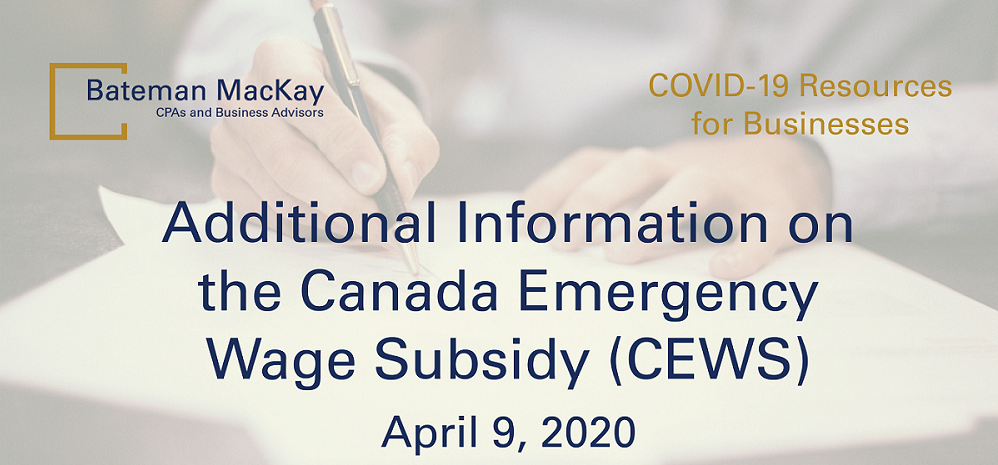
Further to our communication yesterday regarding the Canada Emergency Wage Subsidy (CEWS), additional information and details have been provided by the Department of Finance in addition to a hypothetical numerical example. We anticipate draft legislation concerning the CEWS forthcoming shortly from which we anticipate being able to provide further details and clarification. Additional information has been provided concerning the CEWS eligibility and computation of revenue decline, the CEWS Amounts, and refund for certain payroll contributions.
To be eligible for CEWS, companies must apply each month and show a minimum 15% revenue decline in March and a minimum 30% revenue decline in April and May. This decline can be computed by:
OR
Once an approach is chosen, the employer would have to apply it consistently throughout the program period.
Eligible employers can use either a cash or accrual accounting method for the purposes of calculating their CEWS revenue decline and must use the same accounting method for the full duration of the CEWS period.
For eligible employers, the CEWS covers 75% of an employee’s pre-crisis remuneration up to a maximum of $847 per week per employee. Effectively, employers may then be eligible for a subsidy of up to 100 per cent of the first 75 per cent of pre-crisis wages or salaries of existing employees.
Note that employers are expected to make their “best efforts” to top-up employees’ salaries to bring their salaries to pre-crisis levels. Future clarification is likely forthcoming on this particular aspect of CEWS. Presumably, if the employer has sufficient liquidity and cash flows to pay 100 per cent of remuneration factoring in CEWS, they may then be expected to pay the employees’ unsubsidized portion of their wages.
If employees are on leave with pay and the employer is eligible to claim the CEWS for those employees, 100% of the employer-paid contributions to CPP, EI, the Quebec Pension Plan (QPP), and the Quebec Parental Insurance Plan (QPIP) will be refunded for each full week that employees are on leave. An employee will be considered to be on leave with pay throughout a week if that employee is remunerated by the employer for that week but does not perform any work for the employer in that particular week. This refund would not be available for eligible employees that are on leave with pay for only a portion of a week.
There is no overall limit on the aggregate refunded amounts for these payroll contributions. Employers are required to collect and remit these contributions as usual and will apply for a refund when they apply for the CEWS.
For further clarity, the Department of Finance has provided the following example:
For more information, visit the Finance Canada website that covers the CEWS.
Sign up for our newsletter and receive tax, accounting, and business advisory resources for your business!